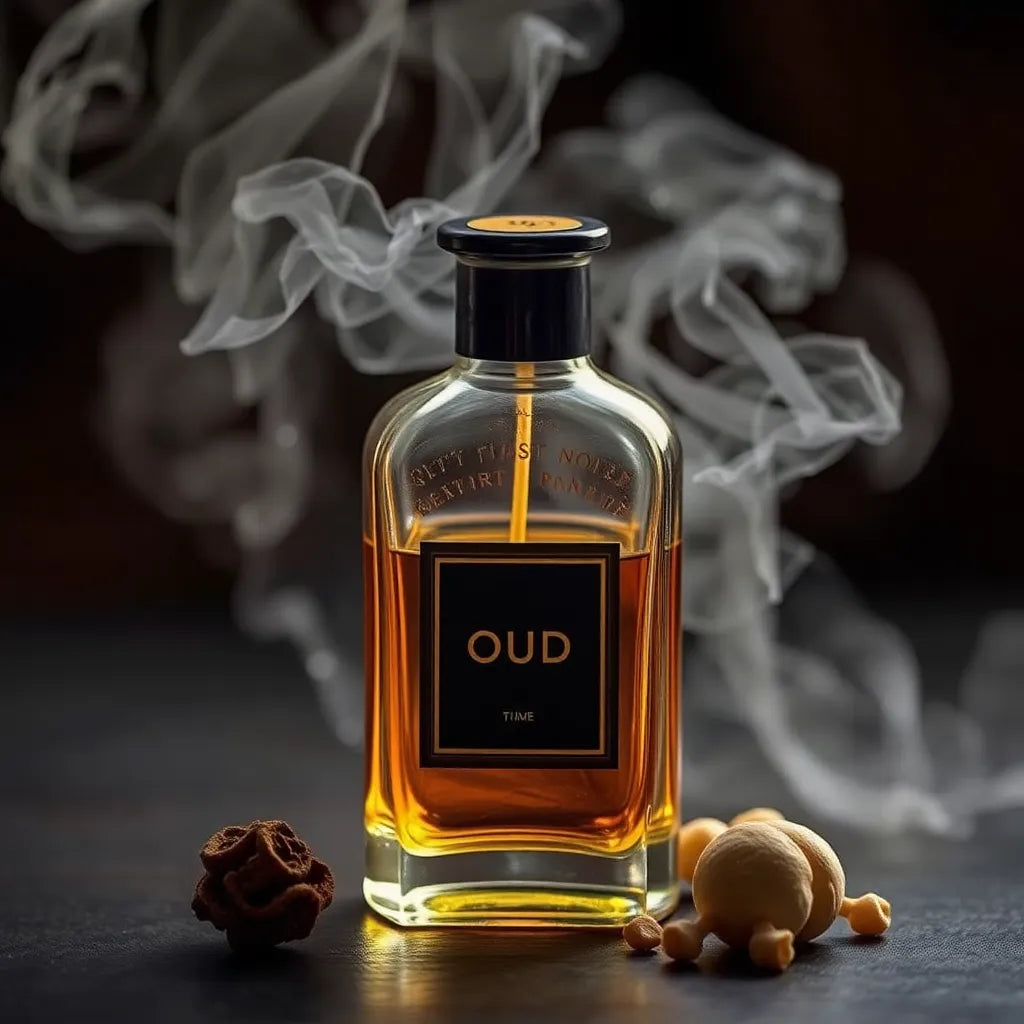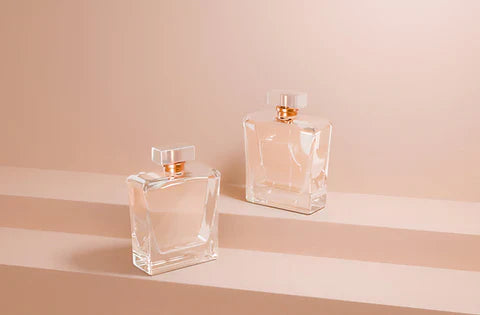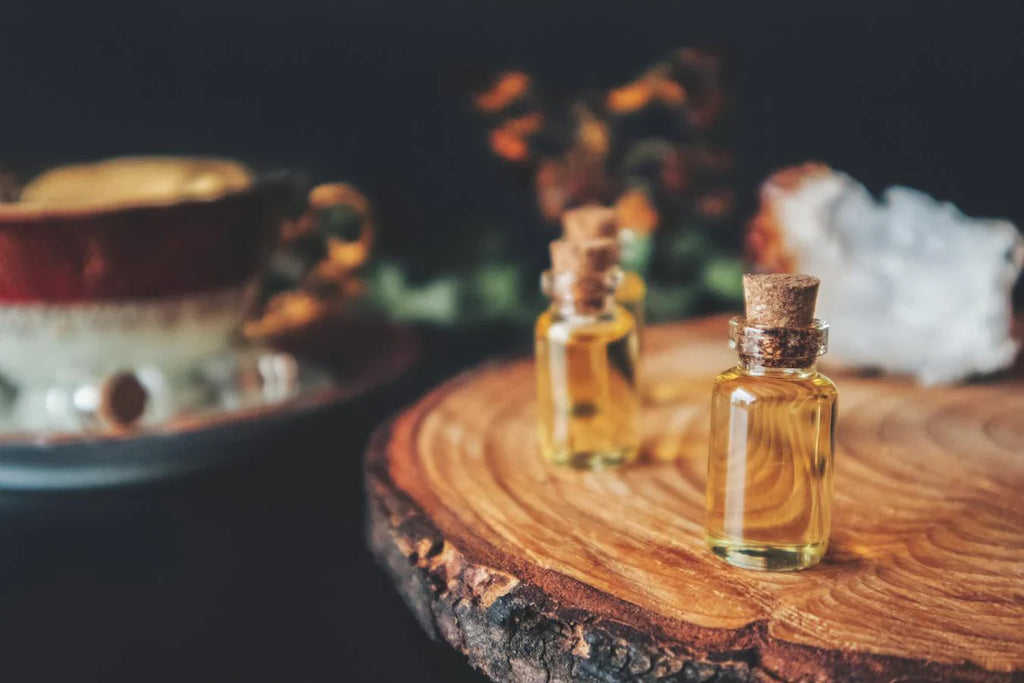
What is oud? Meaning, Benefits & Why Oud Perfume is So Expensive

The oud has been used for thousands of years in religious ceremonies, spiritual gatherings, and traditional medicine in many cultures, particularly in the Middle East, Southeast Asia, and South Asia Compared to other scents that mellow or gradually disappear, oud stays and evolves on the skin, giving a lasting memory and leaving an indelible impression.
Although the oud meaning in Urdu and in other languages varies greatly between Arabic and Urdu, both languages agree that it refers to aromatic, resinous wood. For thousands of years, fragrance connoisseurs have been captivated by the spirituality of oud, which is renowned for its deep, multi-layered, and complex scent.
Types of Oud Used in Perfumes
The primary types of oud perfumes are listed below, arranged by origin and traits:
1. Hindi oud, or Indian oud
Origin: India is the origin, particularly Assam.
scent profile: Earthy, smoky, leathery, animalic, and strong
Notes: Used in Arabian perfumery and attars, oud is one of the oldest and most traditional types. Incredibly powerful.
Popular in: Conventional fragrances from the Middle East
2. The Oud from Cambodia (Cambodian Oud)
Origin: Cambodia
Notes: Popular in both Middle Eastern and Western perfumery, this oud is smoother and more accessible than Hindi oud.
Popular in: High-end oud mixtures and specialty scents
3. Thai oud
Origin: Thailand Thai Oud
Scent Profile: medicinal, herbal, a touch floral, and occasionally spicy
Notes: Used frequently in contemporary, avant-garde fragrances; milder than Indian oud.
Popular in: Independent and artisanal perfumeries
4. Laotian oud
Origin of the Laotian Oud: Laos
Scent profile: Rich, dark, slightly sour, medicinal, and occasionally chocolaty is the scent profile.
Notes: Less sweet than Cambodi oud, known for having a very dark and deep profile.
Trendy In: Expensive fragrances for connoisseurs
5. Borneo Oud
Origin: Borneo, Indonesia's Kalimantan
Scent profile: Woody, crisp, clean, and occasionally minty or camphorous is the scent profile.
Notes: Often characterized as more "uplifting," these notes are very different and unique from the smoky ouds.
Popular in: New mixes and compositions for the oud
6. Malaysian oud
Origin: Malaysia Malaysian Oud
Scent profile: Earthy, woodsy, slightly animalic, and resinous is the scent profile.
Notes: Luxury oud fragrances frequently use a well-balanced oud as their foundation.
Popular in: Classical and contemporary works
7. Kyara, a Vietnamese oud
Origin: Vietnam is the origin.
Notes: Exceptionally rare and costly; regarded as the finest quality oud, named the Kyara-variant.
Popular in: ultraluxe parfums en Japans wierook
8. Oud Accord, or synthetic oud
Origin: produced in a lab
Scent profile: Depending on the formula, the scent profile can vary; it is frequently woodsy, leathery, or smoky.
Notes: Used in popular perfumery to replicate the intricacy of genuine oud at a lower price. sustainable and moral.
Popular in: Designer scents like Versace, Tom Ford, and others are popular.
Why is oud so expensive?
One of the priciest natural substances in the world is oud, and most people wonder why it is so expensive. Well, it's because of many reasons; also, sometimes oud perfume is known as "liquid gold".
The lack of them and their complicated production method are the main causes of its high cost. This way, the heartwood of Aquilaria trees, which only provides the aromatic resin when affected with a certain kind of mold, is the source of oud.
Its aroma, which is often characterized as earthy, smoky, woody, and slightly sweet with notes of leather and spices, evokes sentiments of warmth, mystery, and elegance. This aromatic gem is not only a part of fragrances but also a cultural relic, a symbol, and a therapeutic component.
However, it can take years for the tree to produce enough oil for gathering, and this natural infection is uncommon.
1. Lack of Aquilaria Tree oil
The tree's defensive mechanism is triggered by this infection, and it produces oud, a black, pungent oil. The substance itself becomes extremely valuable due to the rarity and unpredictability of this natural occurrence.
Although not all Aquilaria trees produce it, oud is made from the resin of these trees. It only appears when a certain kind of mold (Phialophora parasitica) infects the tree.
2. The Extended Process of Natural Formation
The oud oil may not fully mature in the wood for several years, perhaps even up to ten, even if the tree is diseased.
However, growers and manufacturers must exercise patience and let the Coil re-mature naturally, to guarantee the greatest quality, this lengthy wait adds to its exclusivity.
3. Expensive Obtaining and Extracting
OUD is not a simple process. Only the wood's resin-rich sections need to be carefully identified and removed by skilled workers.
The resin is then distilled using conventional techniques, a process that can take weeks to finish. Experience, accuracy, and time are all necessary for this entire process, which raises the end product's cost.
4. The Luxury Fragrance Industry Is in High Demand
In perfumery, oud is a highly valued component, especially in Middle Eastern and specialty luxury scents. Also, because of its unique, deep, rich, and complex scent, perfumers and connoisseurs worldwide greatly prize it.
The market price of natural oud oil has greatly increased due to this increased demand.
5. Local A shortage and Limited Supply
OUD is one of the most costly fragrance ingredients despite efforts to grow the trees on plantations, which are still unable to satisfy the growing demand worldwide.
Specific regions of Southeast Asia are home to the majority of Aquilaria trees, and overharvesting has put many natural populations in danger of elimination. There are, therefore, few sustainable and lawful sources of oud.
Oud's advantages in Islam and conventional medicine
Oud is more than just a luxurious fragrance component; it has deep cultural, spiritual, and therapeutic value, especially in Islamic history and traditional healing systems. Let's look at the benefits of oud in both traditional medicine and Islam.
1. Islam's Spiritual Significance
Oud, also known as "Oudh" or "Agarwood," is regarded as a sacred and valuable substance in Islam. It is frequently used in Islamic rites and is mentioned in numerous hadiths (sayings of the Prophet Muhammad ﷺ).
Because of its deep, woodsy aroma, it is valued for blessings, spiritual purification, and enhancing prayer experiences.
Incense in Worship: During major occasions like Eid, Ramadan, and Jumu'ah (Friday prayer), oud chips are frequently lit in mosques and households. The smoke is thought to improve spiritual vigor and purify the air.
Symbol of Purity and Respect: The oud is commonly used in Muslim traditions to welcome guests, demonstrate hospitality and respect, and prepare the departed for the burial.
2. Energetic balance and holistic healing:
Since the oud is believed to repel negative energy and promote inner peace, it is associated with spiritual purification in many traditional communities. Energy healers commonly use oud oil and incense to clear the mind and balance energy.
3. Advantages of Traditional Medicine (Ayurveda and Tibb)
therapeutic properties for millennia. Oud, also known as agarwood, has been prized for ages for both its remarkable therapeutic properties and its potent, seductive aroma.
In many traditional medical systems, including Chinese medicine, Ayurveda, and Unani Tibb, oud has been an important component of natural treatment.
It is thought to have warming and calming properties and is frequently used in Unani Tibb to balance the body's humors. It can also help treat issues like respiratory ailments, digestive issues, and anxiety.
The oud is a helpful tool in Chinese medicine because, among other things, it may be used to quiet the mind, ease heel pain, and flow (energy). It is frequently used to alleviate symptoms like stress, exhaustion, and stomach pain.
-
Lessens Stress and Anxiety: The aroma of oud is soothing and in harmony. In aromatherapy, it reduces stress, promotes mental clarity, and relaxes emotional tension.
-
Anti-Inflammatory Properties: Producing oils and balms, oud is used in traditional medicine to help reduce pain and inflammation, especially in the muscles and joints.
-
Aids Digestion: Indigestion and bloating are digestive problems that have been treated with small doses of oud extract.
How is oil extracted?
Oud oil, sometimes referred to as "liquid gold" or agarwood oil, is one of the rarest and most difficult natural oils to make. Its extraction is a challenging procedure that calls for expertise, tenacity, and accuracy. This is the standard procedure and answer to what oud oil is made of.
1. Resin Formation and Infection History
The Aquilaria tree, which grows naturally in Southeast Asia, is the first in the process. A particular kind of mold or fungus must infect the tree, either naturally or artificially, for oud to form.
Also, the tree defends itself against this infection by producing a dark, aromatic resin. The distinctive aroma of oud is derived from this substance.
2. Resinous Wood Harvesting
It may take several years for the resin to build up, at which point the affected tree parts are carefully identified and removed. Following a thorough cleaning process to remove any non-resinous debris, the wood is separated into dense, dark, and resin-rich sections.
3. Using a knife and soap
The chosen agarwood is either processed into a powder or finely cut into tiny bits. The fermentation process, which helps increase the oil production during distillation, is then started by soaking these wood chips in water for a few days or even weeks.
4. Aging and Oil Gathering
Drop by drop, the distilled oil is gathered and filtered. The aroma of some premium oud oils is allowed to develop and intensify over time by being aged for months or even years.
5. Grading and Purity
Oud oil is rated according to its origin, strength, aroma, and age after it has been extracted and tested for purity. Because pure oud oil is so powerful, it should only be used sparingly—a drop will last for hours.
Oud Perfume in Pakistan—Culture and Popularity
In Pakistan, oud is more than just a scent; it's a symbol of elegance, tradition, and spiritual refinement.
The history of oud perfume is remarkably a great initiative, and today oud perfume in Pakistan, oud perfume holds a special place in the hearts (and wardrobes) of many people, with origins in both cultural and religious traditions.
1. Appeal on an emotional and spiritual level
In Pakistan, oud is often linked to emotional stability and spiritual serenity. It is said that its rich, warm scent fosters inner serenity and presence, which are highly regarded in Sufi and religious communities.
2. Prestige and Gift Culture
Another well-liked gift choice is oud perfumes, particularly for weddings, Eid, and Ramadan. An exquisite oud scent is frequently seen as a sumptuous and considerate gift, signifying distinction and high taste.
3. Cultural Traditions and Daily Life
South Asian tradition has long used oud, especially in the form of attars, or non-alcoholic fragrances. Because of its enduring fragrance, many Pakistanis still favor classic, oil-based oud attars, particularly for special events or family get-togethers.
-
You frequently see people using oud:
-
Before the Jumu'ah prayers on Friday,
-
During weddings or Eid
-
When going to mehfils (spiritual gatherings) or religious events
-
Oud is perfect for formal and solemn occasions since it represents purity, dignity, and spiritual presence.
4. A Developing Pattern in Contemporary Fragrances
In Pakistan, oud has also entered modern fragrance over the past ten years. Oud-based perfumes that combine traditional depth with modern elements like florals, citrus, or musks are now available from a wide variety of domestic and foreign companies.
Best Oud Perfumes in Pakistan
The Saeed Anwar Oud is regarded by fragrance experts as one of the best oud scents in Pakistan. This emerging company has produced a line of premium oud oils and attars that showcase the depth, beauty, and purity of authentic oud culture.
From traditional attars to opulent contemporary blends, the perfume industry in Pakistan has embraced oud wholeheartedly.
There is an oud perfume for every taste, whether searching for something gentle and modern or strong and classic. And talking about the best oud perfume in Pakistan, the Saeed Anwar brand stood out for its unique fragrance and revolutionary ideas in the world of aromas.
One of the best oud scents in Pakistan that has won over fragrance connoisseurs is the Saeed Anwar Oud. This budding brand has created a range of high-quality oud oils and attars that highlight the elegance, purity, and depth of genuine oud culture.
Let's examine some of the highlights of Saeed Anwar's oud collection in more detail:
Hindi Super Oud
One of the highlights of Saeed Anwar's lineup is their Hindi Super Oud. With a strong woody and leathery scent and smoky undertones, Hindi Super Oud is a highly concentrated oil made from old agarwood. It's a traditional option for oud enthusiasts who value strong, enduring scents. Given its remarkable quality and rarity, this premium oud is priced at approximately PKR 27,500.
Cambodia Oud
A lovely option for people who like something sweeter and gentler is Cambodian Oud. Compared to some of the stronger ouds, it is more palatable due to its warm, slightly resinous overtones with traces of honey and spice. One of the more affordable options on the list, this variant is frequently chosen for its adaptability and soothing aroma profile. It costs about PKR 5,500.
Maliki Super Oud
Maliki Super is a spicy, resinous oud with a potent and striking aroma that is ideal for special occasions and nighttime wear. It retains a contemporary elegance while encapsulating the spirit of traditional Arabian perfumery. With a price tag of PKR 20,000, it is squarely in the premium category and has a lovely, all-day aroma.
Sapphire Bloom
This fragrance, which blends floral, citrus, and woody notes, creates a fresh yet musky ambiance that works well in every season. It's also more affordable at around PKR 2,250, which makes it perfect for those who are unfamiliar with oud-based scents. If you enjoy elegant, modern fragrances with a hint of classical oud, Sapphire Bloom might be the one for you.
Kalakasi Oud
For both new and seasoned oud players, Kalakasi is a more refined, well-balanced oud oil with an earthy and woody scent. Because it doesn't overpower the senses and has a mild dry-down, it is perfect for daily use. It is an expensive yet wearable option, costing roughly PKR 23,000.
Final Thoughts—Why You Should Try Oud Today
Oud has something special to offer. Its deep, nuanced scent conveys a tale of patience, artistry, and nature. You're drawn to its earthy smokiness, its serene spiritual vibe, or its audacious statement in a crowded space.
Therefore, this represents the ideal moment to add oud to your collection from Saeed Anwar, whether experimenting with it through a classic attar or an opulent spray perfume. You'll see why it's referred to as liquid gold—rare, potent, and unforgettable—after you do.
So if you are still thinking, what is oud perfume? It is beyond just a fragrance; it's an experience. Oud symbolizes richness, spirituality, and classic elegance, and its profound cultural origins in Islamic history have contributed to its growing popularity in contemporary perfumery.























